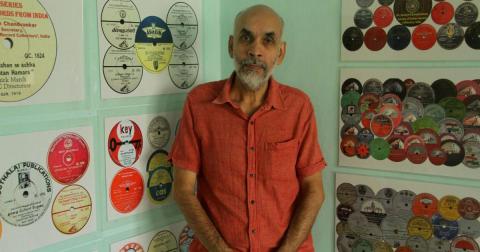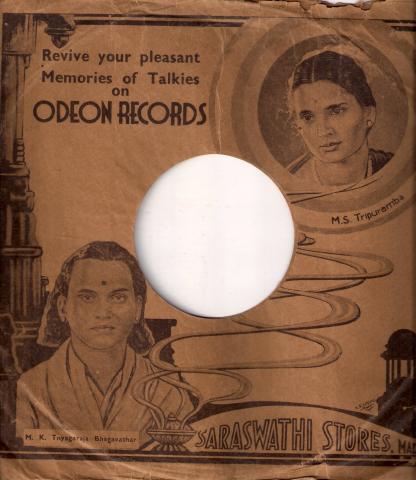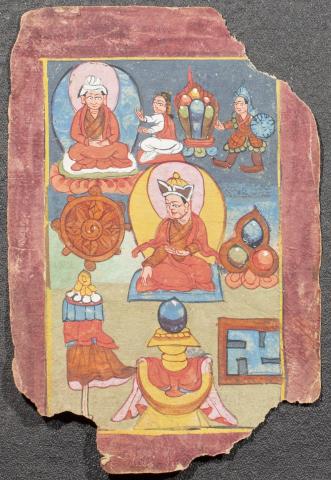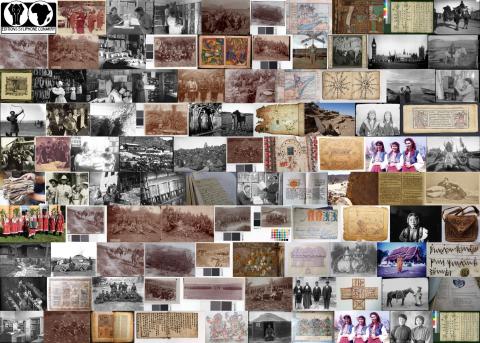
Aims and objectives
This project seeks to document and digitise approximately 100,000 pages of manuscripts housed at Sri Govind Adige’s house who is the Chief Priest of Sri Mookambika Temple, Kollur, Udupi District, Karnataka. The project will aim to digitise the full collection that Sri Govind Adige has held in his family for generations. Preliminary investigations show that these documents are in a very fragile and endangered condition and mostly date from the 13th-14th century. The majority of manuscripts at the Temple relate to: The Agamas; Aranyaka; Mrityunjaya Kalpadrumam; Vastu Shastra; Prayaschitham; Tantra; Mantra. These palm leaf manuscripts essentially contain information on rites and rituals performed at the temple and form the history of this Temple. They are considered to be very sacred and holy. Over time the condition of these manuscripts has degraded due to lack of knowledge of conservation. Currently, they are in very brittle condition and immediate action is required to save them. These palm leaf manuscripts and the knowledge they contain were marginalised with the advent of “modern” education leading to the near-extinction of these manuscripts, first abandoned to the attics of old ancestral homes and later consigned to sea or fire as custom demanded.
Sri Mookambika Temple in Kollur, Karnataka is one of the most prominent temples of Southern India. It is the only temple that is dedicated to goddess Parvathi in the guise of goddess Saraswathi, who is believed to be goddess of wisdom and to be created by Parashurama. This temple is very well known among the people of Tamil Nadu and the goddess Parvathi is called Thai Mookambika in Tamil. Parvathi temple is located exactly on the banks of the perennial river Souparnika that runs close to the foot hills of the Western Ghats. River Sauparnika has its attribute to the eagle called Suparna that did penance in this bank and attained salvation. This temple has a long history for its origin. It is said goddess Parvathi killed the Kamsasuran who lived here and who attempted to become all powerful through his penance. Devi along with the help of Veerabadra, Ganapathi and Shiva initially made him dumb and he came to be called Mookasuran (mooka means to be dumb). Later the goddess killed him with her Chakra on the midnight of Shukla Astami. From then on Devi came to be called Kollur Devi Mookambika. Then her divine energy became one with the lingam worshipped by Kola Maharishi. At the Sri Mookambika temple the Lingam is the main deity and is known as Jyothirlingam. Devi Mookambika has three eyes and four arms, with the divine disc and conch in her hands. The Mookambika temple is renowned for its beauty and aesthetics, all over the world. Goddess Kollur Mookambika is adorned with flowers. Ritual bathing and prayer to the idol is a common feature of the presiding lingam. The perennial Souparnika River’s pure water is used for theertham and puja. The kollur Mookambika temple wears a festival look during Navarathri and Navarathri is celebrated with pomp, show and gaiety.
Outcomes
As per the plan, we digitised approximately 50,000 pages of manuscripts housed at Sri Govind Adige who is the Chief Priest of Sri Mookambika Temple, Kollur, Udupi District, Karnataka.
All manuscripts are ancestral and have been there for several centuries. All these manuscripts have been used for reference for conducting religious ceremonies and temple festivals.
The project involved following steps:
1. Written permission from the owner regarding sharing of digital copy with British Library for non commercial purpose was taken.
2. An electronic database with multiple fields such as Title, Author, Material, Script and Subject was made as per the listing guidelines of British Library.
3. Taking up digital documentation (digitisation) of the selected manuscripts according to specified standards.
5. The original manuscripts to the Temple were then returned to the owner
6. One digital copy of the collection is kept at FOLKLAND, one with the owner and one sent to the British Library.
The records copied by this project have been catalogued as:
- EAP908/1 Manuscripts from Anonymised Temples in Kerala and Karnataka
Due to the cyber-attack on the British Library in October 2023, the archives and manuscripts database is currently inaccessible and we are unable to provide links to the catalogue records for this project.





